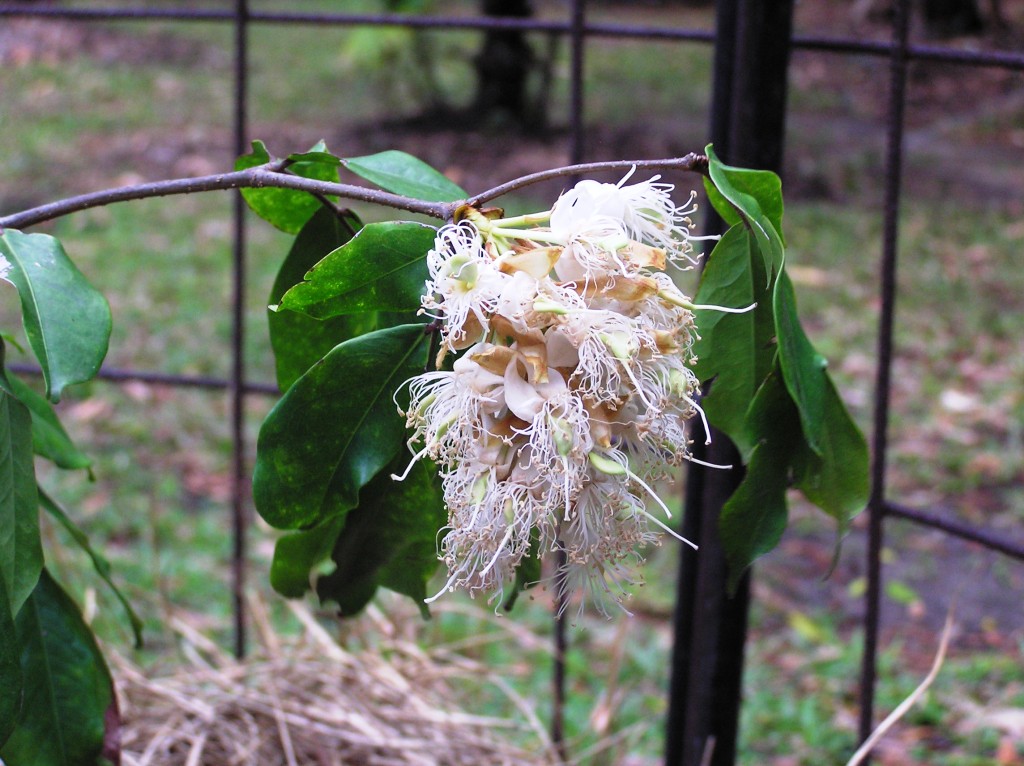Maniltoa Lenticellata on:
[Wikipedia]
[Google]
[Amazon]
''Maniltoa lenticellata'' is a flowering tropical tree in the family . It is native to tropical semi-deciduous  ''Maniltoa lenticellata'' can grow up to tall but, more commonly, only reaches . It has compound leaves with 2-4 pairs of leaflets. New leaves are folded inside dull red bracts and then released in a spectacular cascade of white foliage. The fruity-scented flowers which appear in north Queensland in September to October have 3 to 5 white-cream petals, and may be pollinated by marsupials or bats. They produce a brown pod 25–70 mm long by 18-50mm containing one brown seed in November to March. It is a favoured garden tree.Beasley (2009), p. 111.
''Maniltoa lenticellata'' can grow up to tall but, more commonly, only reaches . It has compound leaves with 2-4 pairs of leaflets. New leaves are folded inside dull red bracts and then released in a spectacular cascade of white foliage. The fruity-scented flowers which appear in north Queensland in September to October have 3 to 5 white-cream petals, and may be pollinated by marsupials or bats. They produce a brown pod 25–70 mm long by 18-50mm containing one brown seed in November to March. It is a favoured garden tree.Beasley (2009), p. 111.
rainforest
Rainforests are characterized by a closed and continuous tree canopy, moisture-dependent vegetation, the presence of epiphytes and lianas and the absence of wildfire. Rainforest can be classified as tropical rainforest or temperate rainfores ...
and gallery forests in northern Queensland
)
, nickname = Sunshine State
, image_map = Queensland in Australia.svg
, map_caption = Location of Queensland in Australia
, subdivision_type = Country
, subdivision_name = Australia
, established_title = Before federation
, established_ ...
, some of the Torres Strait Islands
The Torres Strait Islands are a group of at least 274 small islands in the Torres Strait, a waterway separating far northern continental Australia's Cape York Peninsula and the island of New Guinea. They span an area of , but their total land ...
, and New Guinea
New Guinea (; Hiri Motu
Hiri Motu, also known as Police Motu, Pidgin Motu, or just Hiri, is a language of Papua New Guinea, which is spoken in surrounding areas of Port Moresby (Capital of Papua New Guinea).
It is a simplified version of ...
. Common names include: silk handkerchief tree, cascading bean, and native handkerchief tree.
"''Maniltoa lenticellata'' var. ''villosa'' Verdc. from New Guinea differs from var. ''lenticellata'' in having ovaries with dense, persistent hairs." Quoted from
/blockquote>
Footnotes
References
*Beasley, John. (2009). ''Plants of Cape York: The Compact Guide''. John Beasley, Kuranda, Qld., Australia. . *Endress, Peter K. and Brigitta Steiner-Gafner. (1996). ''Diversity and Evolutionary Biology of Tropical Flowers''. Cambridge University Press. ,
External links
General information.
Maniltoa, lenticellata Fabales of Australia Flora of Queensland Trees of Australia Flora of New Guinea Ornamental trees {{Australia-rosid-stub